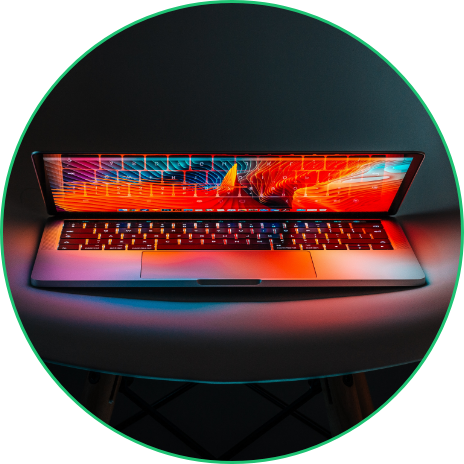How to manage technology’s impact and embrace its benefits
Technology has been a catalyst for change in more ways than we could comprehend. From the introduction of smartphones to robots working in warehouses and even hospitals, to improvements in healthcare and even 3D printing of body parts, there are endless ways in which life wouldn’t be the same without technology.
But, there’s a dark side. If we’re not careful, technology can impact our physical, mental and emotional mental wellbeing, change the way we relate to others and ourselves, encroach into every aspect of our lives, turn our precious leisure time into an addictive spiral of notifications, force us into perpetual unemployment as humans become more and more redundant…..
Wait a minute. It’s all looking a bit dire. Is it really that bad?
To answer that question rationally and without buying into the moral panic, we’ve got to dissect the phenomenon that is technostress.
Technostress, as the name suggests, is the phenomenon of stress and negative psychological impact directly related to the use and adoption of new technologies.
The original definition coined in the early 1980’s says technostress is: “a modern disease of adaption caused by an inability to cope with new technologies in a healthy manner.” Notice that it places the burden on the individual. Inability to cope in a healthy manner? Ouch.
So, what does technostress look like? Why does it happen? Is it really a deficit in us? Or the technology itself? Or, could it be due to our culture and values around technology? And, finally, how can technostress be prevented and what’s the flip side?
What does technostress look like?
Technostress, like regular stress, can be overwhelming.
Some studies have compared technostress to an addiction, even saying that, when we’re not constantly attached to our devices, we can experience craving and withdrawal symptoms.
Technostress can affect your physical, mental, emotional and cognitive abilities. Here’s just some of the ways it can play out:
· Headaches
· Insomnia
· Sore muscles
· Restlessness
· Difficulty concentrating
· Anxiety
· Irritability and anger
· Burnout
Why does it happen?
With more pressure to be productive and higher expectations, our relationship with technology can become incredibly strained. The more that we’re expected to use it – for work, life and play - the more stressful it can become.
And if that’s not enough, we have the incessant anxiety of thinking robots are going to steal our jobs.
Here are just some of the behaviours and beliefs around technology that can make you more susceptible to technostress:
- Taking work home with you: Thanks to smartphones and high-speed internet, jobs are rarely restricted to the workplace. With technology invading our work and home, it shouldn’t be surprising that we’re getting more stressed.
- Overloaded by interruptions: The average office worker receives 121 emails every day, not to mention IM’s and texts. With the ubiquity of technology and constant connectivity, it’s no surprise that people feel overworked and unable to switch off.
- Ever evolving technology and constant introduction of new apps: Many people find new tools unnecessarily complex and intimidating. Every app comes with new “helpful” features and its own unique jargon.
- Performance anxiety: Unfortunately, most people are expected to learn the tool by themselves, without any additional training (or even time) provided. Worse still, many feel that if they can’t keep up with the latest technology, they’ll be replaced by someone who can. This results in a very real sense of insecurity, putting even greater pressure on workers.
- Uncertainty and instability: As technology keeps advancing, many feel unsure about what their work (and life) will look like tomorrow. We live in a constant sense of flux.
It’s you
Like everything, there’s a degree of personal responsibility. Here are some questions that we can all ask ourselves around technology use:
· Become self-aware and mindful around your technology use. How often do you use it? Why do you use it?
· Do you spend enough time engaging in screen-free, device-free activities?
· Do you stop using your device around mealtimes and an hour before bed?
· Do you always feel the urge to download the latest app, only to be overwhelmed by notifications?
· Could you go on a social media sabbatical?
It’s technology
“Smartphones have provided us with a virtually unlimited supply of social stimuli, both positive and negative. Every notification, whether it’s a text message, a “like” on Instagram, or a Facebook notification, has the potential to be a positive social stimulus and dopamine influx”
From: sitn.hms.harvard.edu/flash/2018/dopamine-smartphones-battle-time/
The rush or dopamine hit that we get from smartphone’s constant stimuli is not accidental. Gmail, Facebook, Instagram and others, have all been designed in a way that we feel rewarded when we get feedback from our peers, or even strangers.
Additionally, we’re also seeing more complexity built into our household items. Do we really need our fridges connected to an app on our smartphone?
The design of each app, device or technology certainly contributes to technostress and a feeling that it’s impossible to turn off.
But once we are aware of this, then we can start putting boundaries and processes in place to protect us.
Which leads me onto….
It’s work
When businesses fail to manage the short-term consequences of new tech on their staff, it can lead to staff being slower to adopt (or avoid completely) new technologies, as well as an increased vulnerability to technostress.
Business owners and managers play a key role in preventing technostress by being aware of its causes and directly addressing them. Here are some of the causes and their solutions:
- Too many business owners get starry-eyed over all the apps and technologies available. While technology is a great tool for many use cases, don’t assume you need it to enable every outcome.
- Set boundaries on what is acceptable between work and home life. For managers, this includes not sending conflicting messages by praising staff members who answer emails after hours.
- Design the workday to avoid unnecessary overload. Take an honest look at the tasks your team carries out and ask yourself: What is the minimum amount of technology they need to carry out their tasks? Do we need all those apps to do their job, or are the apps unnecessarily complicating things?
- Are you and your team expected to be constantly communicating and connected? With technology, we can constantly be in touch with our family, colleagues, friends, customers, clients or suppliers. However, all that communication contributes to overload.
Take a breath: The flip side
When we’re worried about technology invading our lives, stealing our jobs and making us miserable and unwell, we need to remember its profound benefits:
· Creation of new jobs. Throughout history, technology has always created more jobs than it has destroyed.
· Reducing poverty. Absolute poverty rates around the world have fallen faster in the past 30 years than at any other time on record - technological advancements have played a key role in that.
· Access to technology can generate positive experiences, improve collaboration, communication and our health, and foster wellbeing and personal growth.
· Automating the mundane and repetitive. By automating the more mundane or back-breaking tasks, more jobs can focus on higher-level and innately human skills like innovation, creativity, empathy, complex decision processes or teamwork.
· More thoughtful design. As the impact of technostress becomes clearer, there’s an opportunity for designers to create apps and systems that mitigate or eliminate technostress.
So, as individuals, technology designers or business owners, we all contribute to techno-stressors. But, with an awareness of both sides of technology - the negative and positive - we can put boundaries and policies in place to protect us. And not only that, when we both embed these limits and embrace technology’s potential, we can become healthier, more productive and more satisfied - at work, at home and at play.
The IT Psychiatrist: Cutting through the moral panic
The IT Psychiatrist cuts through the moral panic and hype around technology to design and develop best practice policies, processes and strategies. We’re here to help you feel confident that your business and your staff are looked after, equipped to put boundaries around technology in place, and follow best practice.
If you want productive, happy staff and industry-leading IT policies, processes and strategies, or a part-time IT manager to help you mitigate technostress, please give us a call.
































